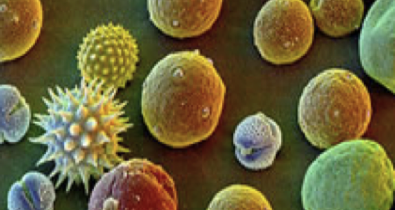SATURDAY MAY 25, 2002
TYPE I HYPERSENSITIVITY

This is a joint work with Zvia Agur and Vera Sleitzer (Institute for Medicine and Bio-Mathematics, Tel Aviv, Israel)
Many cancer chemotherapeutic agents cause hypersensitive reactions. Among these, type I, or IgE-mediated, allergy is the most common reaction to anti-tumor drugs. It has been suggested that both tumor remission and patient's toxicity are critically determined by the particular drug administration schedule. In the present chapter we use this information in conjunction with mathematical modeling of hypersensitivity in order to examine the question whether the drug schedule, rather than the drug compound, also may have an effect on the appearance of an allergic reaction symptoms in a patient undergoing chemotherapy. To examine this question we present a Cellular Automata (CA) model of the immune response, and perform computer simulation of cells and molecules involved in hypersensitive (type I) reactions. Simulations of atopic immune response to allergen injection pinpoint the role of Th2 polarization and hyper-production of IgE, in accordance with real-life animal models (human, mice, etc.). These results are in line with experimental evidence of the crucial role played by IL-4 in developing IgE responses, as well as the inhibiting effect of IFN-gamma. Moreover, our results suggest that varying the dosing interval between subsequent injections significantly alters histamine release after the challenge injection. Our results further suggest that in order to avoid allergic reactions to drugs during therapeutic anti-cancer treatments, one should administer growing dosage of drugs in the same way allergen is administered to the patient during immunotherapy. The interval between cycles should be either very short -- if the drug dose is low, or very long -- if the drug dosage is high. The effect of the rate of slow drug release on the emergence of allergic reaction remains to be further explored.
F Castiglione, V. Sleitser and Z. Agur. Analyzing hypersensitivity to chemotherapy in a Cellular Automata model of the immune system, in Cancer Modeling and Simulation, Preziosi L. (ed.), Chapman & Hall/CRC Press (UK), London, June 26,2003, pp 333-365.
STUDY